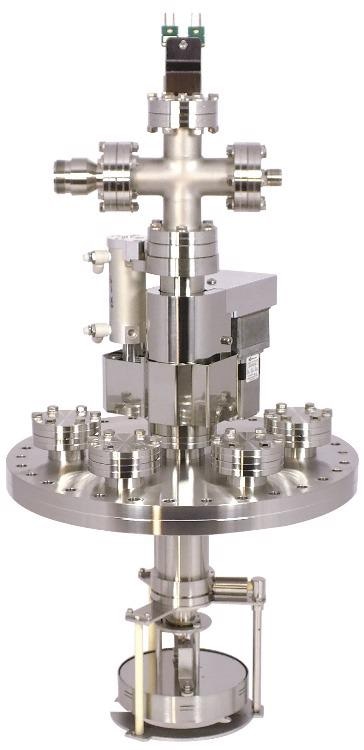In advanced coating and thin-film generation systems, deposition stages play an essential role in enhancing process efficiency and promoting greater substrate coverage. Deposition stages are capable of manipulating substrates in a number of ways under processing conditions.
Due to the range of deposition stages available, selecting the right deposition stage for a given application is vital.

Image Credit: UHV DESIGN LTD
Deposition Stages: The Basics
Static deposition stages hold substrates securely in place, within line-of-sight of the deposition source, using a set of mountings. While static deposition stages can be configured for a range of substrate sizes and orientations, they cannot perform rotations or change their temperature.
In order to achieve high deposition rates and high levels of thin-film uniformity, deposition processes are typically conducted in ultra-high vacuum (UHV) conditions. Deposition stages are therefore designed to be UHV compatible.
Deposition stages are often capable of heating and rotating substrates, as well as optional radio frequency (RF) and direct current (DC) bias. These features offer improved coating uniformity and density, greater film and interface stress relief and accelerated deposition rates, resulting in superior film morphologies.
Positioning Substrates in UHV Conditions
UHV Design provides deposition stages with a choice of in-line, right-angle and glancing configurations, as well as modular designs, to suit any specifications.
After a substrate has been secured within the rotating cradle, it can be uniformly heated up to temperatures of 1200°C by a stationary heater module.
Revolution of the substrate at up to 60 rpm facilitates uniform deposition of the physical vapor phase across the entire wafer.
Unlike conventional pyrolytic graphite heaters, which are gradually consumed by oxidation at high oxygen partial pressures and high temperatures, UVD Design refractory heaters are optimized for extended life in oxidizing environments.
This results in greater efficiency and reduced operating costs for deposition applications such as thermal evaporation, pulsed laser deposition and e-beam, RF and DC sputtering.
To find out more information on deposition stages from UHV Design, browse the full range of EpiCentre deposition stages on their website, or get in touch with the UHV Design team.

This information has been sourced, reviewed and adapted from materials provided by UHV DESIGN LTD.
For more information on this source, please visit UHV DESIGN LTD.